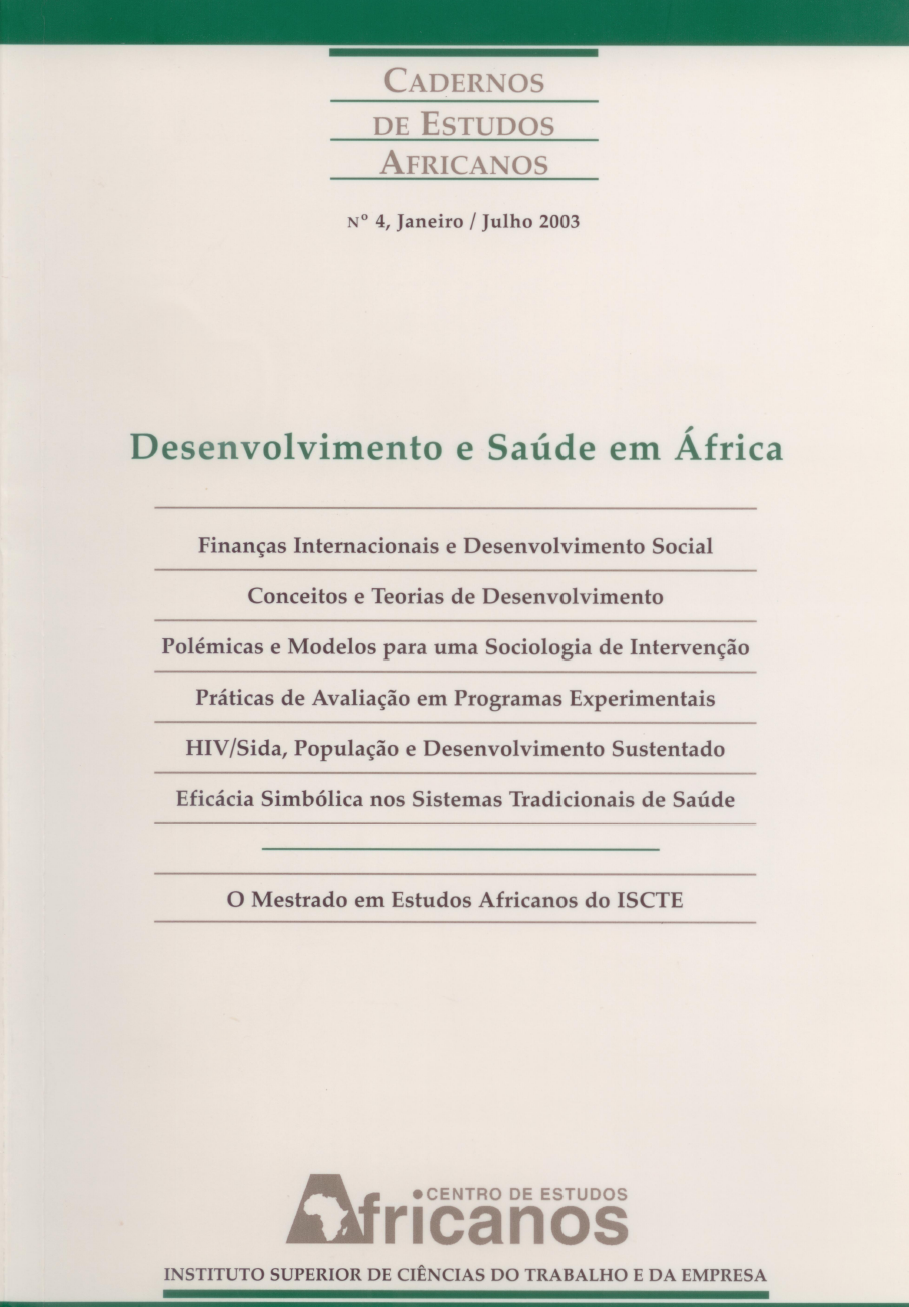Padrões de crescimento, finanças internacionais e desenvolvimento humano: a experiência das duas últimas décadas
DOI:
https://doi.org/10.4000/cea.1575Palavras-chave:
human development, AfricaResumo
Apesar do conceito de desenvolvimento ter ganho uma aceitação crescente nos meios académicos e políticos, nos últimos 20 anos muitos indicadores no terreno têm vindo a revelar taxas de crescimento inferiores às dos anos 1960-1980, acentuando-se os desequilíbrios quer no interior dos países, quer entre eles. O crescimento tem beneficiado principalmente os grupos sociais de médio ou elevado rendimento e favorecido apenas algumas regiões e países, enquanto que os grupos sociais, os países e as áreas mais deprimidas não registam progressos assinaláveis. Estes resultados em alguns países parecem estar relacionados com a estagnação ou o declínio do rendimento familiar, a sua crescente volatilidade e desigual distribuição, bem como com a instabilidade do financiamento internacional ao desenvolvimento dos países pobres. Mas, em contrapartida, não existe qualquer prova de que o declínio no valor e distribuição da renda social seja o responsável por essa tendência.
Referências
G. A. CORNIA (ed.), Inequality, Growth and Poverty in an Era of Liberalisation and Globalisation, Oxford, Oxford University Press, 2004.
G. A. CORNIA & L. MENCHINI, «The pace and distribution of gains in child wellbeing over 1980-2000: some preliminary results», in G. A. CORNIA (ed.), Harnessing Globalisation for Children, <http://www.unicef-icd.org>, 2002.
G. A. CORNIA, N. DRAGER, D. WOODWARD & F. ZAGONARI, «Income Inequality in the Globalisation Era: Counting the Cost for Health», mimeo, Florence and Geneva, 2003.
L. C. SMITH & L. HADDAD, Overcoming Child Malnutrition in Developing Countries: Past Achievements and Future Choice, «Food, Agriculture and the Environment Discussion Paper- 30»,Washington, IFPRI, 2000.
World Bank, The World Development Report 2000/2001, Washington, The World Bank, 2000.
DOI : 10.1596/0-1952-1129-4
Downloads
Publicado
Edição
Secção
Licença
Direitos de Autor (c) 2016 Cadernos de Estudos Africanos

Este trabalho encontra-se publicado com a Licença Internacional Creative Commons Atribuição-NãoComercial-CompartilhaIgual 4.0.
Autorizo a publicação do artigo/recensão submetido do qual sou autor.
Declaro ainda que o presente artigo é original, que não foi objecto de qualquer tipo de publicação, e cedo em exclusivo os direitos de publicação à revista Cadernos de Estudos Africanos. A reprodução do artigo, no todo ou em parte, noutras publicações ou noutros suportes depende de autorização prévia da editora Centro de Estudos Internacionais do Iscte - Instituto Universitário de Lisboa.

